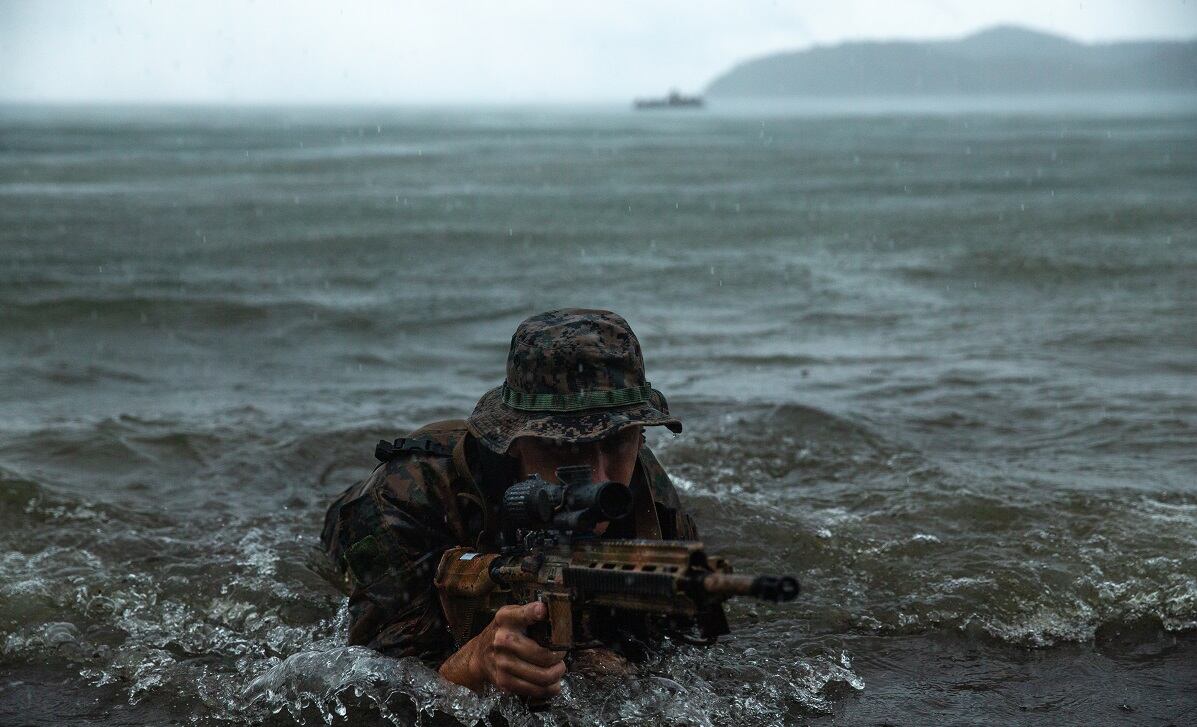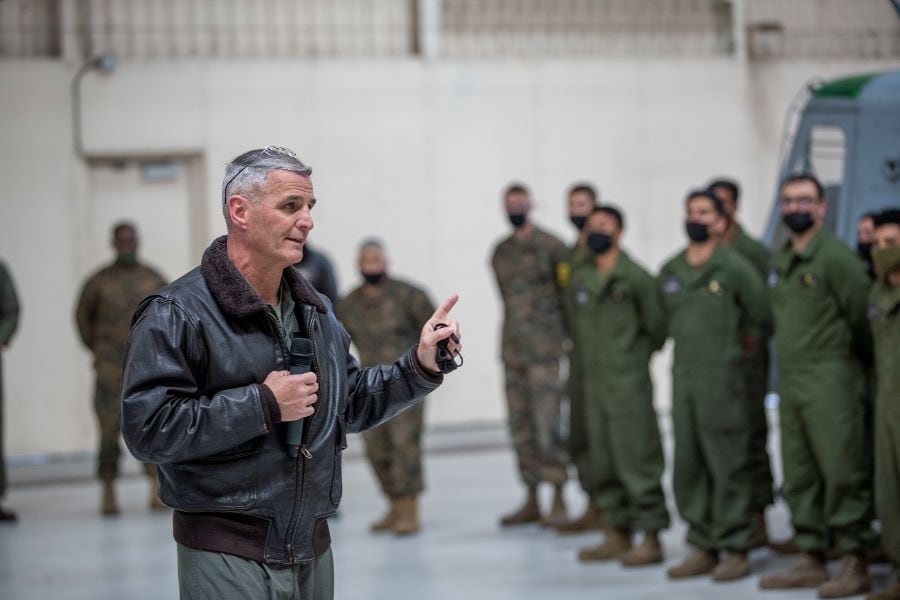ORLANDO, Florida — The Marine Corps’ top officer in charge of training on Tuesday outlined the service’s sweeping new strategy that promises to modernize how troops learn and ready them for a faster, more connected era of combat.
The three-part plan looks to bolster the service’s occupational training, professional military education, unit-level training, advanced individual training and service-level exercises, said Lt. Gen. Kevin Iiams, head of the Marine Corps’ Training and Education Command.
“While we have progressed all of these in the past couple of years, it’s time to take new steps,” he said during a panel of senior leaders at the annual Interservice/Industry Training, Simulation and Education Conference here. “Everything has to be about lethality and war-fighting, and then rigorous, repeatable standards.”
RELATED

“Training and Education 2030″ is the latest of three blueprints that Marine Corps Commandant Gen. David Berger has drawn up for organizing, training and equipping the future force. Earlier strategies have focused on talent management and force design.
It comprises three overarching projects dubbed “Triumph,” “Trident” and “Tripoli,” Iiams said.
The first, “Triumph,“ is a directive to offer more options for personalized learning that Marines can do at their own pace.
Technology from iPads to cloud-based lesson libraries promise to transform military education for the long haul. Officials hope those tools are a key to retaining members who may otherwise have felt boxed in or overwhelmed by more regimented, classroom-based lessons.
Though not foolproof, proponents argue a digital-first approach can help fast learners move on sooner and allow slower learners to repeat lessons as needed.
“How do we put more instructors in the field that can instruct across all of these modalities?” Iiams said.
RELATED

The second initiative, Project Trident, aims to more tightly integrate the processes and systems that the Navy and Marine Corps use to track and strike targets.
Military forces long have struggled to share data across a patchwork of hardware and software, leading to myriad efforts to resolve the problem like the Army’s Project Overwatch and the Air Force’s Advanced Battle Management System.
Cross-service communication issues loom particularly large as the Pentagon contemplates the prospect of a fast-paced war in the Pacific.
“How do you use multiple sets of precision munitions to close a kill web on an advanced adversary, peer-level threat?” Iiams said.
He continued: “We don’t have those right now, but we need the curriculum and we need our current naval forces … to train our future forces and our future Marines and sailors exactly how to do that.”
The Marine Corps announced its third effort, dubbed “Project Tripoli,” in April.
Tripoli is the latest iteration of a yearslong attempt to build a networked training system that lets troops “fight” together in the digital realm despite operating different simulators.
Marine Corps Times reported in May that an initial version of the service’s Live Virtual Constructive Training Environment was almost ready to debut at Marine Corps Air Ground Combat Center, Twentynine Palms, California.
RELATED

Officials expect five Marine Corps installations to receive the technology by 2025, followed by the broader ability to connect to airmen, guardians, soldiers and sailors sometime in the future.
“We’re not just training our individual Marines and our units, but we’re training decision-makers with AI to the high end, so that when we do have the next fight … that we’re going to be ready, relevant and capable,” Iiams said.
He envisions future Marines as resilient, “stand-in” forces who can infiltrate enemy territory to disrupt their activity from the start of a conflict.
But even as the mission evolves, he said, “the alchemy of what it takes to make a Marine cannot change.”
Rachel Cohen is the editor of Air Force Times. She joined the publication as its senior reporter in March 2021. Her work has appeared in the Washington Post, the Frederick News-Post (Md.), Air and Space Forces Magazine, Inside Defense, Inside Health Policy and elsewhere.





